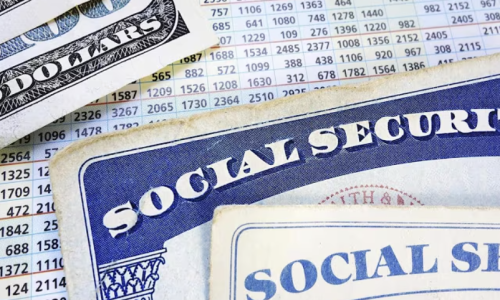A new Social Security rule could require millions to show up in person—here’s what to expect
By
Veronica E.
- Replies 1
Most people would agree that dealing with Social Security from home—with a warm drink and cozy chair—is far more appealing than braving the long lines at a government office.
But that could soon change for millions of Americans.
The Social Security Administration (SSA) is proposing a rule that would require many to handle certain tasks in person rather than online or over the phone.
If approved, this new policy may impact how retirees and others manage their benefits—starting as early as August 18.
Here’s what’s happening and how you can prepare.

What’s changing at the SSA?
The SSA wants to increase in-person requirements for services like updating addresses, requesting tax forms, checking claim statuses, and verifying benefits.
The proposed rule could impact 3.4 million people annually, shifting tasks many have become used to completing online or by phone into office visits.
It’s part of a broader push to strengthen identity verification, especially through a system known as the Security Authentication PIN (SAP).
The agency argues this is a necessary step to curb fraud and ensure benefits go to the correct individuals.
If the Office of Management and Budget approves the plan, the change could take effect by late summer.
Also read: Are Social Security increases really keeping up with your expenses?
Why is this happening now?
According to the SSA, the primary goal is to protect people from identity theft.
Fraud targeting Social Security recipients—especially older adults—has been on the rise, and agency leaders believe these extra steps can help.
Critics say that while security matters, adding more hurdles may do more harm than good, especially for seniors and people with disabilities.
As always, the challenge is balancing protection with access.
Also read: Paper Social Security checks are here to stay—for now
More traffic, longer waits
Visiting a Social Security office is rarely a quick errand.
Offices around the country already face staff shortages and long wait times.
Adding millions of new in-person requests could make delays even worse.
“This will create a significant new burden,” said Kathleen Romig, a policy expert at the Center on Budget and Policy Priorities.
For people who live far from SSA offices, or rely on others for transportation, the new rule could make managing benefits even more difficult.
Also read: Boost your Social Security income in retirement with these three smart strategies
Online access has its limits
The SSA encourages people to use the "My Social Security" portal to avoid in-person trips—but that’s not an option for everyone.
Roughly 25% of older adults say they never go online.
Others find the sign-up process difficult, or struggle with weak internet access.
Nancy LeaMond of AARP voiced concern about these digital hurdles: “SSA’s new Security Authentication PIN process… could create new barriers for older adults who rely on telephone access to manage their benefits.”
Even those who are somewhat comfortable with technology may still prefer the reassurance of speaking to a person.
Also read: Important Social Security news: benefit recipients face new changes
Security vs. accessibility
There’s no question that keeping personal data safe is important.
But some advocates worry that in the effort to reduce fraud, the SSA could end up leaving behind the very people it’s meant to serve.
Many older Americans rely on phone calls to handle their Social Security needs—especially if they don’t have a computer or someone to help them navigate one.
Ensuring both security and accessibility will be key to making sure the system remains fair and functional for all.
Also read: Is your Social Security check about to get smaller? Here’s what’s unfolding
How you can prepare
If this rule goes into effect, here are a few things you can do to stay ahead:
Staying informed about changes to Social Security policies can help you avoid surprises and plan ahead.
Your experience and voice matter as these decisions continue to take shape.
Read next: Social Security stirs backlash after unexpected message lands in inboxes

Have you visited a Social Security office recently? Was it a smooth experience, or one you’d rather not repeat? If this rule takes effect, how will it affect your ability to manage your benefits? Share your stories and concerns in the comments—your insight might help others in our community navigate what’s ahead.
But that could soon change for millions of Americans.
The Social Security Administration (SSA) is proposing a rule that would require many to handle certain tasks in person rather than online or over the phone.
If approved, this new policy may impact how retirees and others manage their benefits—starting as early as August 18.
Here’s what’s happening and how you can prepare.

Social Security remains a vital part of daily life for millions of Americans. Image Source: YouTube / CNBC Television.
What’s changing at the SSA?
The SSA wants to increase in-person requirements for services like updating addresses, requesting tax forms, checking claim statuses, and verifying benefits.
The proposed rule could impact 3.4 million people annually, shifting tasks many have become used to completing online or by phone into office visits.
It’s part of a broader push to strengthen identity verification, especially through a system known as the Security Authentication PIN (SAP).
The agency argues this is a necessary step to curb fraud and ensure benefits go to the correct individuals.
If the Office of Management and Budget approves the plan, the change could take effect by late summer.
Also read: Are Social Security increases really keeping up with your expenses?
Why is this happening now?
According to the SSA, the primary goal is to protect people from identity theft.
Fraud targeting Social Security recipients—especially older adults—has been on the rise, and agency leaders believe these extra steps can help.
However, not everyone is convinced this is the right path forward. Critics say that while security matters, adding more hurdles may do more harm than good, especially for seniors and people with disabilities.
As always, the challenge is balancing protection with access.
Also read: Paper Social Security checks are here to stay—for now
More traffic, longer waits
Visiting a Social Security office is rarely a quick errand.
Offices around the country already face staff shortages and long wait times.
Adding millions of new in-person requests could make delays even worse.
“This will create a significant new burden,” said Kathleen Romig, a policy expert at the Center on Budget and Policy Priorities.
For people who live far from SSA offices, or rely on others for transportation, the new rule could make managing benefits even more difficult.
Also read: Boost your Social Security income in retirement with these three smart strategies
Online access has its limits
The SSA encourages people to use the "My Social Security" portal to avoid in-person trips—but that’s not an option for everyone.
Roughly 25% of older adults say they never go online.
Others find the sign-up process difficult, or struggle with weak internet access.
Nancy LeaMond of AARP voiced concern about these digital hurdles: “SSA’s new Security Authentication PIN process… could create new barriers for older adults who rely on telephone access to manage their benefits.”
Even those who are somewhat comfortable with technology may still prefer the reassurance of speaking to a person.
Also read: Important Social Security news: benefit recipients face new changes
Security vs. accessibility
There’s no question that keeping personal data safe is important.
But some advocates worry that in the effort to reduce fraud, the SSA could end up leaving behind the very people it’s meant to serve.
Many older Americans rely on phone calls to handle their Social Security needs—especially if they don’t have a computer or someone to help them navigate one.
Ensuring both security and accessibility will be key to making sure the system remains fair and functional for all.
Also read: Is your Social Security check about to get smaller? Here’s what’s unfolding
How you can prepare
If this rule goes into effect, here are a few things you can do to stay ahead:
- Stay up to date. Follow SSA updates and trusted sources like AARP to find out exactly what’s changing and when.
- Set up online access if possible. Even if you prefer phone calls, having a "My Social Security" account can be helpful.
- Make appointments early. If you think you’ll need to visit an office, try scheduling ahead to avoid long waits.
- Ask for help. If you have trouble with internet access or transportation, reach out to family, friends, or local senior organizations.
- Speak up. If this rule would make things harder for you, share your experience with elected officials or advocacy groups. Your voice could help shape future decisions.
Staying informed about changes to Social Security policies can help you avoid surprises and plan ahead.
Your experience and voice matter as these decisions continue to take shape.
Read next: Social Security stirs backlash after unexpected message lands in inboxes
Key Takeaways
- The SSA has proposed a new rule requiring 3.4 million people per year to visit Social Security offices for tasks like address changes and benefit verification.
- The policy is part of a push for fraud prevention, but critics warn it could burden older Americans—especially those in rural areas or with mobility issues.
- While online access through "My Social Security" remains available, many older adults lack internet access or comfort with digital tools.
- Advocates including AARP are urging the SSA to ensure that added security doesn’t come at the cost of accessibility for seniors.
Have you visited a Social Security office recently? Was it a smooth experience, or one you’d rather not repeat? If this rule takes effect, how will it affect your ability to manage your benefits? Share your stories and concerns in the comments—your insight might help others in our community navigate what’s ahead.







